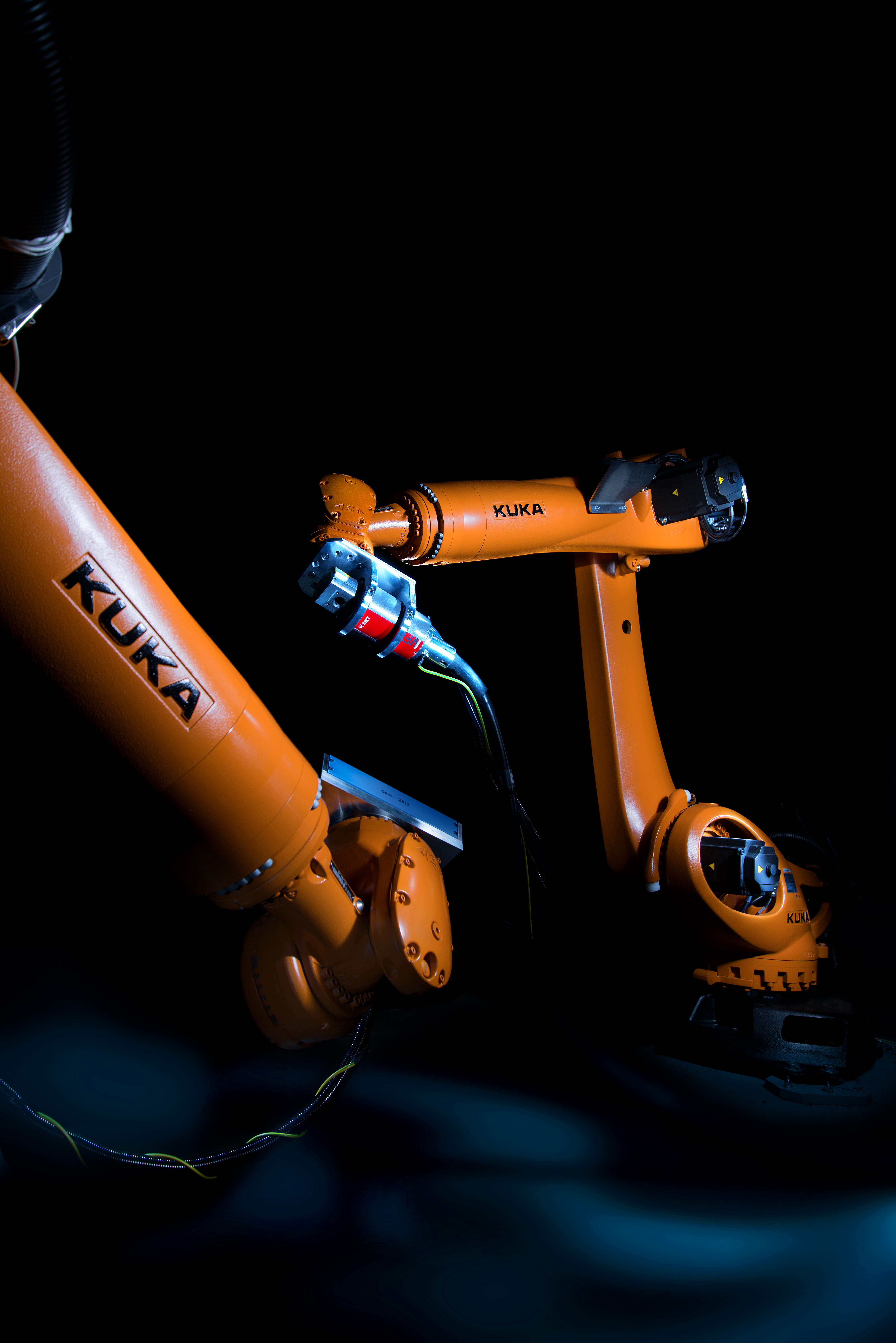The use of robots in non-destructive testing offers a decisive advantage over conventional industrial CT systems: test positions on complex shaped objects, such as vehicle bodies, can be reached this way. In practice, several cooperating robots that are carrying the imaging components such as e.g. X-ray source and detector correspondingly, move around the test object. This way, the system is capable of conducting three-dimensional CT with detail recognizability in the size range of a human hair. The object can be inspected down to the last detail using this technology with the utmost precision, without damaging it. Previously, the specimen for such an analysis had to be disassembled or even sawed out and analyzed in a separate CT system.
Common industrial X-ray CT systems are capable of analyzing objects of about 30 centimeters in diameter and thus to acquire 3D information about all external but also hidden internal structures. These CT images can be virtually disassembled and analyzed in the computer e.g. as stack of sectional images. To achieve resolutions of less than one micron, extremely precise hardware components are required. With large industrial robots – here with ranges of three meters and more – it is possible to reach sections, so-called »regions of interest ROI«, on much larger and complex shaped objects. The particular challenge is to algorithmically correct geometrical inaccuracies of the robots directly from the recorded measurement data. The most precise industrial robots of this size only achieve accuracies of ½ to ¼ millimeter throughout their entire working area – while CT requires at least 1/20 millimeter depending on the application. The solution to this problem is the basis for using this technology productively today.
Robot-assisted CT, as has become reality today as a result of these developments, is only the beginning of a larger idea. In the long term, the aim is to not simply measure material data indiscriminately or completely, but to acquire only the relevant data. And what is relevant data, this so-called cognitive sensor system will decide for itself. Customers are supplied with some kind of highly flexible black box. They do not have to deal with the system and do not have to have NDT know-how. Parts of this box are, for example, robots that have access to different, self-adapting sensor systems and then in the broadest sense decide for themselves which methods they use and how. The robot applies an X-ray system, an air ultrasound system or even a thermography system to solve a specific defined task and not just to test something. Through the application of artificial intelligence, RoboCT can assist people in a variety of tasks by proposing optimal parameterization in terms of accessibility and recording parameters as a black box, depending on the task at hand.
 Fraunhofer Group for Materials and Components - Materials
Fraunhofer Group for Materials and Components - Materials